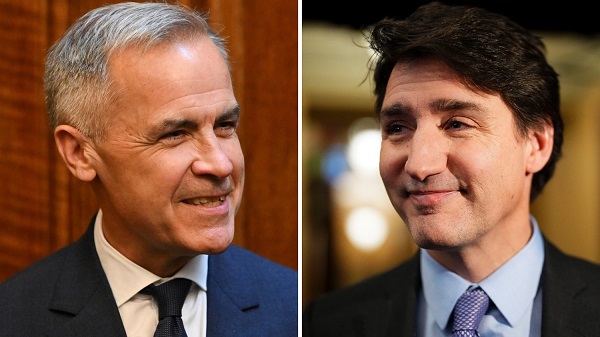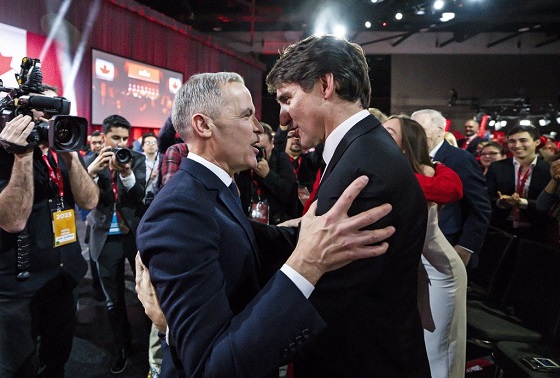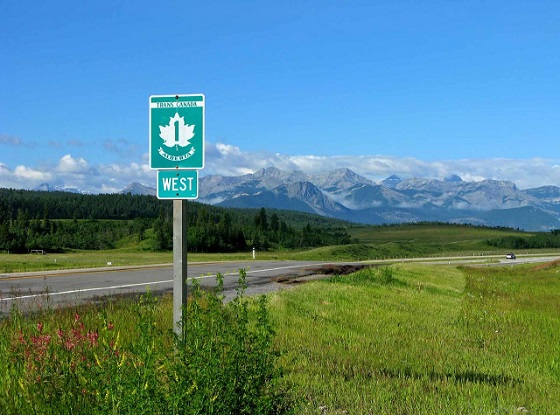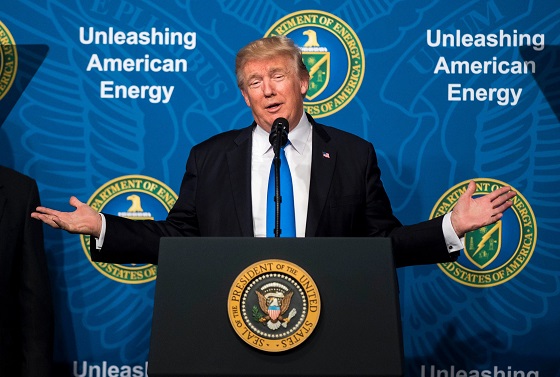National
Taxpayers Federation joins constitutional court fight regarding equalization expansion

From the Canadian Taxpayers Federation
Author: Carson Binda
“Provincial governments want the courts to force Ottawa to give them even more money through the equalization program”
The Canadian Taxpayers Federation is joining the fight against Newfoundland and Labradors’ legal bid to increase federal equalization payments.
“Provincial governments want the courts to force Ottawa to give them even more money through the equalization program and taxpayers simply can’t afford to pay those bills,” said Carson Binda, B.C. Director for the CTF. “Taxpayers in so-called have provinces lose billions through the equalization program, but the payments don’t provide any long-term solutions in recipient provinces.
“The Canadian Taxpayers Federation is getting into this court fight to stop provinces from wasting even more taxpayers’ money on the equalization program.”
The Newfoundland and Labrador government is suing the federal government for more equalization money. Premier Andrew Furey is arguing a province should receive more tax dollars when it can’t afford to pay for new programs that other provinces implement.
“Taxpayers in the rest of Canada shouldn’t be on the hook for whatever new spending provincial politicians want to roll out,” Binda said. “Equalization already costs $25 billion a year – how much would the bill go up if Furey gets his way?”
The CTF filed an application to intervene in the Newfoundland and Labrador Supreme Court on Oct. 3, 2024. The CTF will argue that the Constitution does not give provinces standing to sue Ottawa for bigger equalization payments.
“Canada’s Constitution was never designed to grant provincial governments the authority to forcibly extract more tax dollars from taxpayers in other provinces,” said Devin Drover, CTF General Counsel and Atlantic Director. “We look forward to representing taxpayers in the court in this groundbreaking case.”
National
New Canadian bill would punish those who deny residential indigenous schools deaths claims

From LifeSiteNews
Bill C-254 would give a maximum two-year jail sentence for people who deny or downplay claims that there were mass graves at Indian Residential Schools.
A new bill looks to give jail time to people who engage in so-called “Denialism” and question the media and government narrative surrounding Canada’s “Indian Residential School system” that there are mass graves despite no evidence to support this claim.
The private members’ Bill C-254, An Act To Amend The Criminal Code, introduced by New Democrat MP Leah Gazan, would give out stiff penalties to deniers, saying the bill is needed to “end Residential School denialism.”
Gazan said that her bill is for all “Residential School survivors and our families.”
She said that so-called “denialism is spreading, twisting facts, denying genocide and reigniting harm,” adding, “It is not only hurtful, it is dangerous.”
Bill C-254, should it become law, would give a maximum two-year jail sentence for people who “other than in private conversation willfully promotes hatred against Indigenous people by condoning, denying, downplaying or justifying the Indian Residential School system in Canada or by misrepresenting facts relating to it.”
The bill does read that exceptions are given for people who “establish the statements communicated were true” or if the statements are “relevant to any subject of public interest.”
This is not the first time Gazan has tried to get such a bill passed. A bill she previously brought forth that sought to criminalize the denial of the unproven claim that the residential school system, once operating in Canada, was a “genocide,” lapsed after an election was called.
Last year, retired Manitoba judge Brian Giesbrecht said Canadians are being “deliberately deceived by their own government” after blasting the former Trudeau government for “actively pursuing” a policy that blames the Catholic Church for the unfounded “deaths and secret burials” of Indigenous children.
As reported by LifeSiteNews, John Carpay, founder and president of the Justice Centre for Constitutional Freedoms (JCCF), blasted what he said are “false” and “virtue-signaling” displays of “truth and reconciliation” goals pushed by the federal government and media when it comes to indigenous “land acknowledgments.”
In 2021 and 2022, the mainstream media ran with inflammatory and dubious claims that hundreds of children were buried and disregarded by Catholic priests and nuns who ran some Canadian residential schools. The reality is, after four years, there have been no mass graves discovered at residential schools.
However, as the claims went unfounded, since the spring of 2021, over 120 churches, most of them Catholic, many of them on indigenous lands that serve the local population, have been burned to the ground, vandalized, or defiled in Canada.
Recent polling has shown that over two-thirds of Canadians want some kind of proof of the “unmarked graves” before believing the claims that Indigenous children were secretly murdered and buried at residential schools by Catholic clergy.
armed forces
The Liberal Government Just Betrayed Veterans. Again. Right Before Remembrance Day.

$3.97 BILLION Cut From Veterans Affairs. Cannabis Benefits Slashed. Hypocrisy in Full Bloom.
They’re quietly dismantling the only lifeline veterans have left. The federal government just carved $3.97 billion out of Veterans Affairs Canada’s budget.
That’s not trimming fat, that’s cutting into the bone and burning the body.
And as if that weren’t disgusting enough, they’re also slashing medical cannabis reimbursements for veterans from $8.50 down to $6.00 per gram.
Kelsi Sheren is a reader-supported publication.
To receive new posts and support my work, consider becoming a free or paid subscriber.
The same medicine that’s keeping thousands of veterans alive through PTSD, chronic pain, and TBI recovery gutted by bureaucrats who’ve never had to bury a friend who lost the battle at home.
I testified in Canada’s first veteran suicide study and I warned them. I sat in front of Parliament and told them this would happen. I told them this LAST WEEK. I told them veterans were being failed by their own government ignored, delayed, and dismissed until they broke.
The study exposed it the chronic failure of the liberal veteran system. Suicide rates among veterans were higher than the national average. VAC systems were drowning in paperwork and apathy. Those who found stability through medical cannabis were finally regaining their lives.
So what did this government do with that data?
They buried it then cut the funding anyway.
This isn’t mismanagement. It’s betrayal with a signature and a smile while they wear a poppy and pretend to smile for photo ops. Jill McKnight and Mark Carney need to be held accountable for this. Canadians will DIE. Make no mistake.
This week, cannabis providers like MyMedi.ca confirmed what Ottawa buried in bureaucratic language:
“The Federal Government released its potential new budget, which includes a proposed policy change reducing the Veterans Affairs Canada reimbursement rate for medical cannabis from $8.50 per gram to $6.00 per gram.”
That’s a 30% cut to a life-saving medicine. It forces veterans to downgrade their treatment or pay out of pocket, the empty pockets that is. Standing in food bank lines and now having to find medicine on the black market to be able to function.
To justify it, the Liberals cited “declining market prices.” Let’s get one thing straight, recreational weed is not medical cannabis.
Medical cannabis is pharmaceutical-grade regulated for purity, potency, and consistency. It’s prescribed by doctors, not dealers. It’s the difference between numbing your pain and healing from it. Cutting that is like telling a diabetic to use cheaper insulin or less of it because the government found a “better price.”
It’s criminal, make no mistake.
Every November, the liberal government stands at podiums wrapped in poppies, preaching about “honouring our heroes.”
Then, when the cameras turn off, they quietly gut the budget that keeps those heroes alive.
They say they’re increasing “overall government spending” by $141 billion over the next five years. Yet they’re carving out $4 billion from the very department that’s supposed to prevent veteran suicide.
They can find billions for consultants, media subsidies, and overseas virtue projects but not to keep veterans from killing themselves. That’s not just hypocrisy. That’s moral rot and our government needs to be dismantled, held accountable and re built.
This is what corruption looks like, it’s just in polite Canadian form. There doesn’t need to be a bribe to call it corruption. Corruption is when a government pretends to care while quietly dismantling the systems that hold lives together.
Corruption is cutting medical support for veterans, then gaslighting the public with talk of “efficiency.” Corruption is using Remembrance Day for photo ops while veterans wait years for their disability claims.
Every one of these decisions sends a message – You were useful once. Now you’re expensive.
Every dollar cut equals blood on their hands and it will be your fault.
I will tell anyone who wants to join: don’t.
They will leave you to die, and step over your body to hand an immigrant your benefits the ones you fought your whole career for. This isn’t abstract. This isn’t about numbers on a spreadsheet. Every cut means, longer delays for mental health treatment. More vets turning to opioids or alcohol.
More suicides that could have been prevented. More suicides, MORE SUICIDES, MORE SUICIDES!!!
And when those suicides happen, the same politicians will stand at the next memorial and talk about “honour” while wearing crocodile tears.
Fucking liars.
Veterans aren’t asking for charity. We’re demanding the promises that were made.
If this government truly cared, they’d fund what works, not gut it. What they just did says everything. They’d protect cannabis access, streamline claims, fund the psychedelic assisted life saving therapy and actually listen to the data from the studies they commissioned.
Instead, they’re too busy protecting their image.
This isn’t about politics anymore. It’s about integrity. A country that forgets its warriors doesn’t deserve to be called free.
We fought for this land, bled for it, and came home to a system that’s now turning its back on us. No more quiet compliance. No more polite outrage.
Somewhere in this country a country that used to look and act like Canada a veteran won’t make it to morning.
A family will lose their loved one. Children will grow up without a parent. And the void they leave will never, ever be filled.
It won’t be because they were weak. Not because they didn’t try every minute of every day just to keep breathing.
It’ll be because a country that sent them to war and keeps sending kids to wars built on lies refused to bring them all the way home.
Canadians veterans are officially being left to die.
And the liberals are holding the knife.
KELSI SHEREN
– – – – – – – – – – – – – – – – – – – – – – – – – – – – – – – – –
Support the show here! – Paypal – https://paypal.me/
Buy me a coffee! – https://buymeacoffee.com/
Subscribe, like and comment! Let’s connect!
Youtube – https://www.youtube.com/@
Substack: https://substack.com/@
TikTok – https://x.com/KelsiBurns
Listen on Spotify –
|
|
The Kelsi Sheren Perspective
Kelsi Sheren Podcast |
Listen on Apple:
|
|
The Kelsi Sheren Perspective
Kelsi Sheren 310 episodes |
-

 espionage2 days ago
espionage2 days agoU.S. Charges Three More Chinese Scholars in Wuhan Bio-Smuggling Case, Citing Pattern of Foreign Exploitation in American Research Labs
-

 Business1 day ago
Business1 day agoCarney’s Deficit Numbers Deserve Scrutiny After Trudeau’s Forecasting Failures
-

 Business1 day ago
Business1 day agoHere’s what pundits and analysts get wrong about the Carney government’s first budget
-

 International1 day ago
International1 day agoKazakhstan joins Abraham Accords, Trump says more nations lining up for peace
-

 Business1 day ago
Business1 day agoCarney budget doubles down on Trudeau-era policies
-

 Automotive1 day ago
Automotive1 day agoElon Musk Poised To Become World’s First Trillionaire After Shareholder Vote
-

 Alberta14 hours ago
Alberta14 hours agoTell the Province what you think about 120 km/h speed limit on divided highways
-

 Business17 hours ago
Business17 hours agoBill Gates Gets Mugged By Reality








